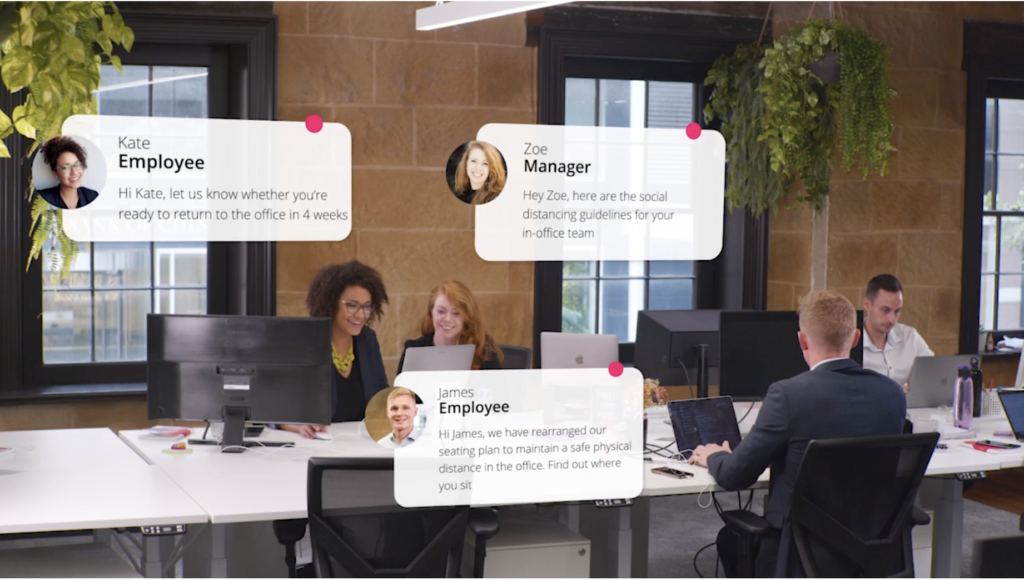
Employee experience front and centre for new HR era

Giving job satisfaction is essential, but nurturing employee engagement can unlock their potential and unleash the performance of legendary proportions. A study observing companies for eleven years found that those who highly value their employees have more robust financial results than those who don’t. The companies with performance-enhancing cultures posted revenue growth of 682% and net income growth of 756%. In comparison, those who don’t have such a culture only had a 166% revenue growth and 1% net income growth.
Employee engagement is key to a company’s productivity as engaged workers are usually the most productive workers. In addition, they tie their personal achievements with their companies’ success, so they are more invested in the success of the business and are more likely to stay.
What’s causing the Great Resignation?
According to a recent Gallup study, engaged workers are 30% less likely to seek new employment; the number jumped to 74% for actively disengaged workers in 2021. It reported that only 36% of US employees are currently engaged in their work and workplace. It is not difficult to see why ‘The Great Resignation’ or ‘The Big Quit’ is happening now following the pandemic’s impact on people’s life situations and priorities.

“Productivity and engagement are two sides of the same coin,” HR and business leadership expert Josh Bersin said at Enboarder EDGE 2020, a virtual event held last year. “You don’t make people happy and then expect them to perform. It’s the other way around. You give them a situation […] where they can perform well, and then they become happy”.
Distanced but not disengaged
With more employees working remotely or choosing to have a hybrid work-office mix, the workforce is becoming distributed, so individuals are distanced from each other. Employers must be more aware and empathetic of their employees to prevent disengagement from arising. Before designing a strategy that aligns talent optimization with business priorities, they must first know what’s going on with their people. It needs to be easy for people to get in touch and have a safe space to share their concerns promptly. Fortunately, there are tools available that allow organizations to connect, communicate and orchestrate people better to craft a more human-centric culture and strategy, such as Enboarder.
“When your company has an interruption, or your business unit, or your team or your project, your most important skill is in enabling the people, the team, the organization itself to pull you out of that problem,” Bersin said during his Enboarder EDGE 2020 session. “You can’t do it yourself as an HR person or a leader – we have to allow other people to do that with us. And that’s why employee experience is so important.”

Enboarder EDGE 2021
Enboarder was established in 2015 and now counts over 360 customers, including Shopify, McDonald’s, Cisco Meraki, Scentre Group, EA Games, Canva, and LVMH. The platform has gone beyond being used for onboarding — more than 40% of its customers deploy it for other uses, like ensuring Covid-19 measures are communicated, arranging parental leave, and reboarding returning employees.
This month, Enboarder EDGE 2021 gathers more Experience-Driven Geniuses to share their insights on harnessing the power of human connections for business success. In addition, the free three-episode streaming experience will be launching the People Activation Revolution – an entirely new way to think about how we work in a reality where remote and hybrid work is the new normal. Episode 1 of EDGE 2021 goes live on 19 October. Register and check out the viewing time for your region here.
READ MORE
- 3 Steps to Successfully Automate Copilot for Microsoft 365 Implementation
- Trustworthy AI – the Promise of Enterprise-Friendly Generative Machine Learning with Dell and NVIDIA
- Strategies for Democratizing GenAI
- The criticality of endpoint management in cybersecurity and operations
- Ethical AI: The renewed importance of safeguarding data and customer privacy in Generative AI applications
